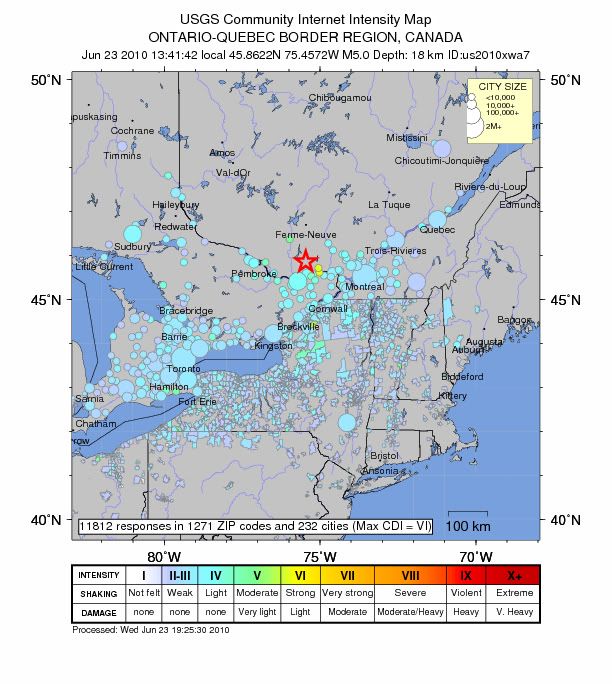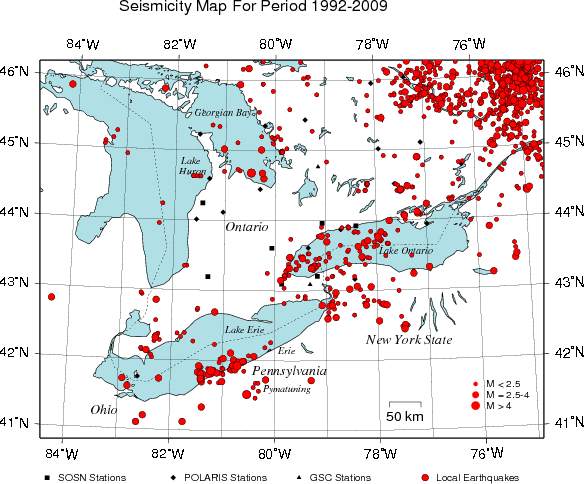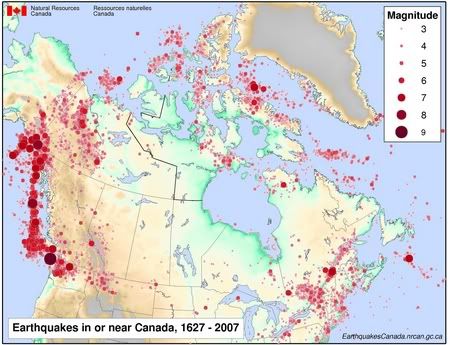
Both the USGS and the GSC are now reporting that this was a magnitude 5.0 event. That's a moment magnitude, so that's as accurate a number as can be reported.
Canadians in southern Ontario and western Québec should report what they felt (or didn't feel) here. Americans anywhere nearby (particularly New York state, Vermont, NH, Massachusetts and northern Pennsylvania) can report what they felt or didn't fell to the USGS.
The Ottawa Valley has non-trivial earthquake hazard.

These are historic earthquakes in Southern Ontario. Below are historic earthquakes for Canada:

As you can see, you are most likely to experience an earthquake in BC or the Yukon, but it isn't unusual to have smaller event in Québec or Ontario (or Nunavut or the maritimes). Earthquakes on the west coast are usually due to the Pacific plate subducting under the North American plate. The east coast of Canada and the US is a passive margin. That means that there isn't this sort of plate interaction. Also, the Ottawa valley is a fair distance from any plate boundary but it has a history of earthquakes. An event like this is to be expeceted every three years or so. The earth's crust is being compressed and this causes the stress, which was just released today. There's a good explanation for non-earth scientists here. The interesting question (to me) is whether this is post-glacial rebound? You see, we are currently coming out of an ice age, and recently (in geological terms) North America was covered in ice. When you take that weight away, the earth bounces back up, but because it is visco-elastic, it doesn't do so immediately, just like silly putty.
My mother called to ask me if there was really an earthquake. She was driving. There are two different scales which are important. The Richter scale is about the magnitude of ground motion and energy released. When we talk about 'magnitude' we are talking about this type of scale, but frankly, it's rare to still be using the Richter scale - what you really want is a moment magnitude (here it was 5.0). The magnitude is the size at the epicentre and can be calculated with remote measurements. The other scale that is useful is the intensity scale. The instensity scale is more qualitative and measures what was felt. Unless you were in Buckingham, Québec, you probably only felt light shaking. People outside likely did not notice.
There is only one dot on that map of Canada which really concerns me. It's that magnitude 9 dot near Vancouver Island. That's a megathrust earthquake which happened 310 year ago. It caused a tsunami in Japan. It will happen again. It is estimated that this type of earthquake will happen in northern Cascadia (BC, Washinton State, Oregon) every 500 years (plus or minus 100 years).









No comments:
Post a Comment